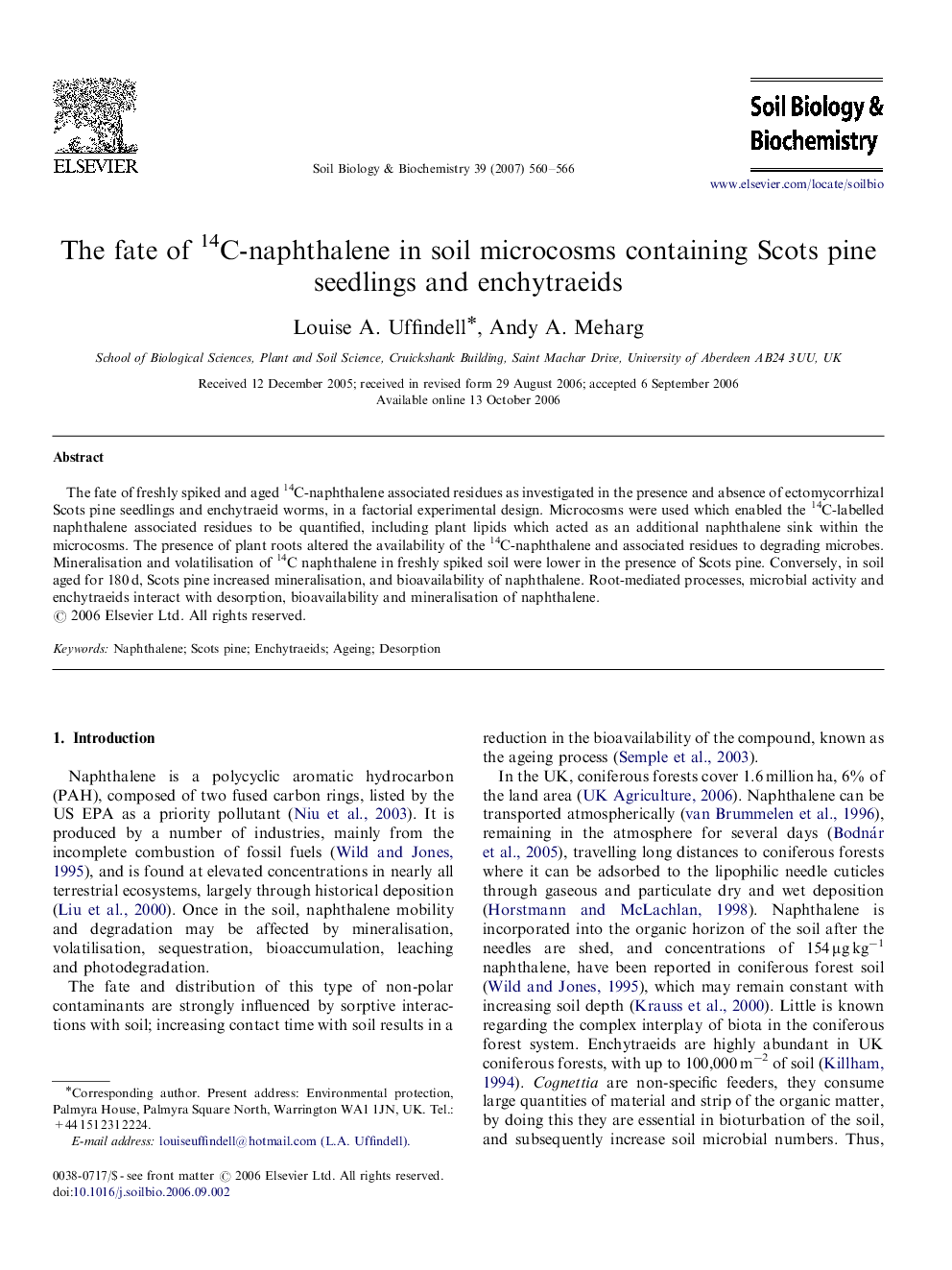| Article ID | Journal | Published Year | Pages | File Type |
|---|---|---|---|---|
| 2026475 | Soil Biology and Biochemistry | 2007 | 7 Pages |
Abstract
The fate of freshly spiked and aged 14C-naphthalene associated residues as investigated in the presence and absence of ectomycorrhizal Scots pine seedlings and enchytraeid worms, in a factorial experimental design. Microcosms were used which enabled the 14C-labelled naphthalene associated residues to be quantified, including plant lipids which acted as an additional naphthalene sink within the microcosms. The presence of plant roots altered the availability of the 14C-naphthalene and associated residues to degrading microbes. Mineralisation and volatilisation of 14C naphthalene in freshly spiked soil were lower in the presence of Scots pine. Conversely, in soil aged for 180Â d, Scots pine increased mineralisation, and bioavailability of naphthalene. Root-mediated processes, microbial activity and enchytraeids interact with desorption, bioavailability and mineralisation of naphthalene.
Related Topics
Life Sciences
Agricultural and Biological Sciences
Soil Science
Authors
Louise A. Uffindell, Andy A. Meharg,
